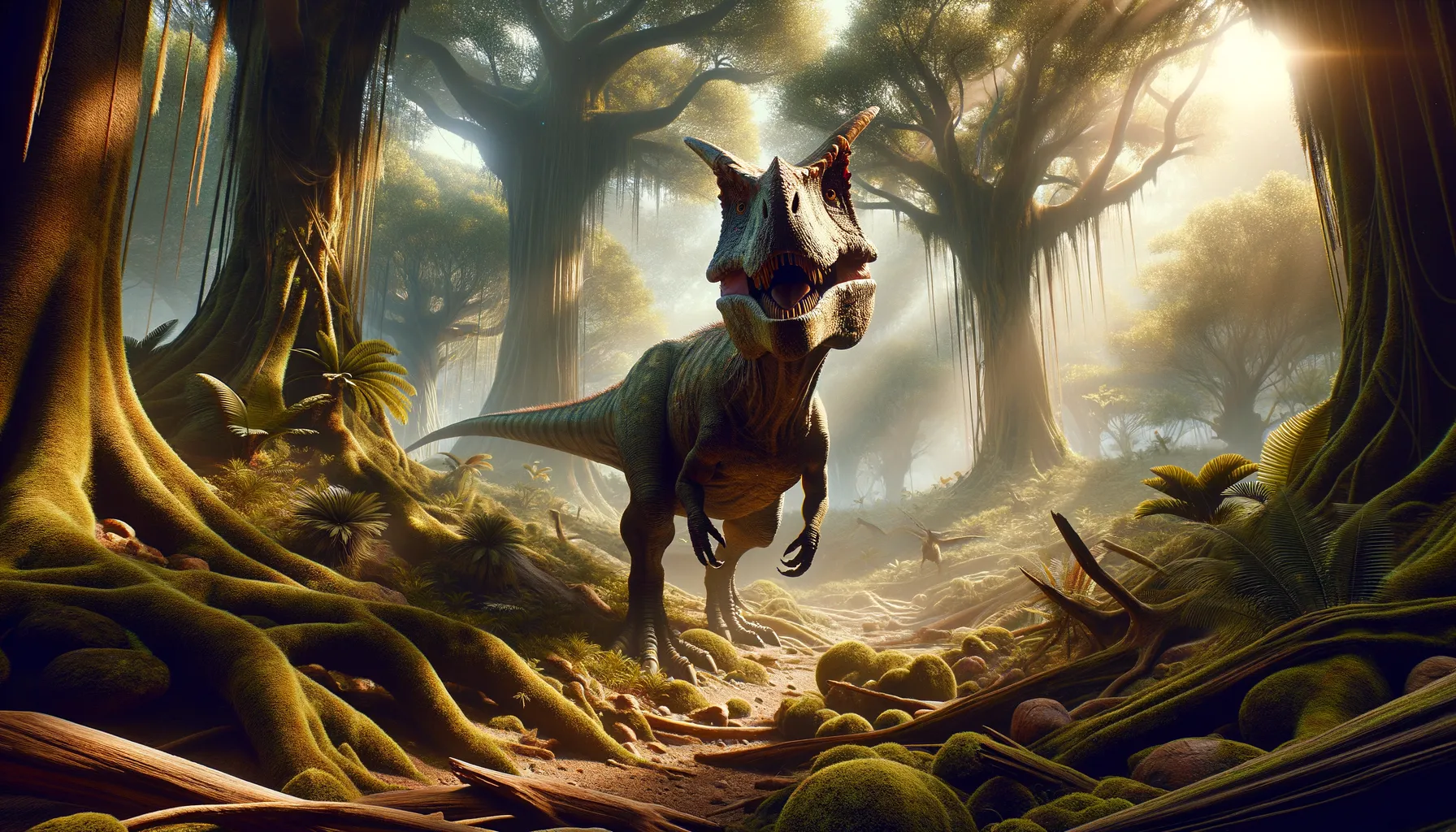
Picrodon
Unraveling history's enigmatic shadows.
Period
Jurassic
Length
Precise length is not determined.
Height
Exact height is uncertain.
Weight
Exact measurement unknown due to fragmentary remains.
Picrodon is a little-known dinosaur from the Jurassic period, mainly known from fragmentary fossils found in England. The limited remains make it challenging to paint a full picture of Picrodon’s life, appearance, and behavior. While not much is documented about its physical characteristics or exact lifestyle, it adds to the rich tapestry of prehistoric life and emphasizes the complexity of reconstructing the past.
Diet
Due to scarce fossil evidence, Picrodon's diet remains uncertain. It might have been herbivorous, feeding on the abundant Jurassic plant life. Alternatively, it could have been omnivorous, with occasional animal matter supplementing its diet.
Hunting
If Picrodon was omnivorous, it might have engaged in opportunistic hunting, seeking out small animals or scavenging. It might have relied on basic instincts and local resource availability, adapting its behavior to the environment.
Environmental challenges
Living in the Jurassic period, Picrodon faced diverse environmental challenges, including fluctuating climates and competition for resources. As forests expanded, it would adapt to varying vegetation types, ensuring food security. Additionally, it had to navigate the delicate balance of avoiding larger predators while finding adequate nutrition.
Speed
Unknown but likely moderate.
Lifespan
Not well-documented.
First discovery
Described from fragmentary remains discovered in England.
Fun Facts
- Picrodon was a dinosaur that lived during the Cretaceous period.
- This dinosaur is known from fossils found in Africa, making it a rare discovery on the continent.
- Picrodon is thought to have been herbivorous, feeding on the abundant plant life of the Cretaceous period.
- The name 'Picrodon' means 'bitter tooth', a reference to the dinosaur's unusual teeth.
- Picrodon's fossils provide valuable insight into the ancient ecosystems of Africa.
- Despite its fascinating history, Picrodon remains a somewhat mysterious dinosaur due to the limited fossil evidence.
- Researchers continue to study Picrodon to learn more about its role in the prehistoric world.
Growth and Development
The exact growth patterns of Picrodon remain unclear due to limited finds. It likely had a variable growth rate influenced by resource availability and environmental pressures. Juveniles would adapt rapidly to their surroundings to ensure survival and reach reproductive age.
Habitat
Picrodon inhabited a lush and dynamic environment, typical of the Jurassic, characterized by rich vegetation and diverse ecosystems. Its surroundings offered a blend of coastal and inland habitats, supporting a wide range of life forms. Depending on its dietary needs, it might have inhabited open spaces or denser forested areas.
Interaction with other species
Interacting with other Jurassic species, Picrodon may have engaged in competition for food with herbivores or shared niches with omnivores. Mutual coexistence might have been possible, with defensive behaviors ensuring it stayed safe from larger predators. Social behaviors, if any, remain speculative.
Natural lifespan
Picrodon's natural lifespan remains largely speculative.
Reproduction
Without substantial fossil evidence, Picrodon's reproductive strategies are difficult to detail. It probably reproduced similarly to other dinosaurs of its era, with egg-laying and possibly some degree of parental care. The size and type of nests or eggs remain unknown.
Social behaviour
Picrodon's social behavior is speculative at best, potentially involving solitary lifestyles or loose groupings. Any social structure would have revolved around resource availability and predation pressure, with interactions based on competition or cooperation.
Fossil locations
Picrodon is known primarily from fossils found in England. Its discovery adds a piece to the paleontological puzzle of Jurassic life. The limited fossil record makes locating additional finds a priority for understanding its role and distribution.
